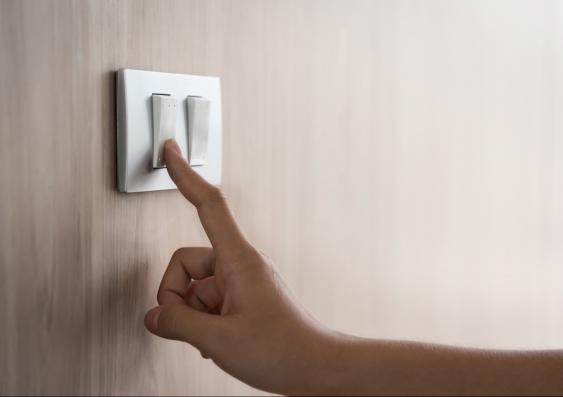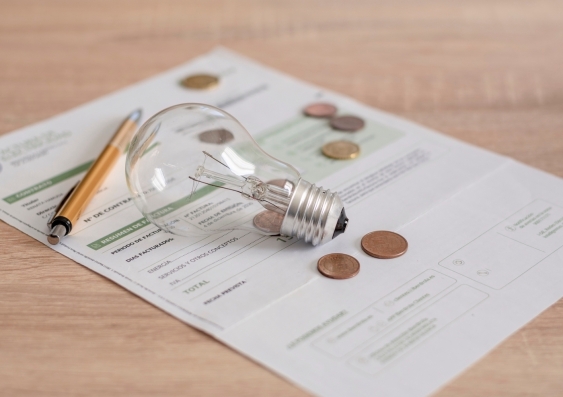Why are electricity prices rising again?
Despite government intervention to reduce electricity prices, energy regulators indicate power bills will still increase this year.
Despite government intervention to reduce electricity prices, energy regulators indicate power bills will still increase this year.

Ben Knight
UNSW Media & Content
(02) 9065 4915
b.knight@unsw.edu.au
Around 5 million households will be eligible to receive up to $500 relief on their electricity bills under a $1.5 billion assistance package set to be confirmed in the federal budget. But Australians struggling with the rising cost of living might still face more pain, with electricity prices expected to rise again soon.
Customers on standard energy plans in New South Wales, Queensland, and South Australia could see increases of up to 24 per cent on their bills next financial year, according to a draft determination by Australian Energy Regulator (AER) – the body which manages wholesale electricity and gas markets across Australia. The Victorian regulator – the Essential Services Commission – has also flagged a hike of up to 30 per cent in the state.
The final determination on the proposed raise in benchmark prices is expected to be announced this month.
“Multiple political and economic factors have driven global energy shortages, which has seen some record increases in prices in coal, oil and markets,” says Dr Dylan McConnell, renewable energy and energy systems analyst at the School of Photovoltaic and Renewable Energy Engineering, UNSW Sydney. “This has pushed up the price of electricity for retailers, and therefore the price of electricity for customers.”
About a million customers are estimated to be on default contracts, known as standing offer contracts. This is a basic plan that a household defaults to if they don’t negotiate with their energy retailer. The default market offer is the maximum total billing amount a customer on the standing offer can be charged based on average usage.
“The default market offer is a benchmark price designed to make it easier for customers to compare energy plans across providers, as well as a safety net for those not engaged with their retailer,” Dr McConnell says. “It was introduced in 2018 following a review by the Australian Competition and Consumer Commission (ACCC) that found competition between retailers was not sufficiently lowering energy prices.”
The AER reviews the price of the default market offer annually, taking into account several factors, including network costs, operating costs and wholesale prices. The upcoming increase flagged is due mainly to a rise in wholesale prices – the price retailers pay large generators for the electricity they then supply to their customers.
“Around 90 per cent of customers are on market energy plans – a rate which is usually a discount on the default market offer,” Dr McConnell says. “So if the price of the default market offer increases, the price for those on market plans may as well.”
Wholesale electricity prices rose substantially last year, as many European countries rejected oil and gas exports from Russia following the war in Ukraine. An increase in global energy demand emerging from the pandemic also exacerbated shortages.
“There was and to some extent still is a lot of volatility in the global energy market, largely following the war in Ukraine and slow supply recovery post-pandemic. These dynamics are factored into the default market offer calculation by the AER,” Dr McConnell says.

The default market offer is expected to increase this year. Photo: Shutterstock.
Australia extracts enough gas to sustain its own energy needs, but most of it is exported. Because of this, domestic gas prices are tied to the volatility of the global energy market.
“Around three-quarters of our gas is exported, which has added a huge demand to eastern seaboard gas supply, especially without a gas reserve policy in place,” Dr McConnell says. “Those export commitments cannot be waived easily, so Australia remains linked with international markets and is exposed to global supply shortages and volatility.”
Read more: Australia’s energy market operator is worried about the grid’s reliability. But should it be?
The futures commodities market, where retailers can hedge – or fix – wholesale gas prices for an extended period, experienced a significant spike in 2022. Those inflated prices are locked in now and will flow through to households in electricity bills.
But the wholesale price hasn’t increased as much as originally forecasted after intervention from the Federal Government to temporarily cap prices and provide rebates on bills for some low-income households.
“The price controls introduced by the federal government on coal and gas seem to have had some impact on the futures price, which are lower than expected,” Dr McConnell says.
Longer-term, adopting renewable energy may offer more consistent relief and insulate customers from volatile price increases in the wholesale market. However, more investment in transmission and energy storage is needed.
“Energy independence requires significant infrastructure development, which takes time,” Dr McConnell says. “But there’s little operating and maintenance costs once renewable energy is up and running. So, it is a natural hedge against commodity price volatility and introduces more supply into the system.
“The savings from generators then trickle down to retailers and eventually customers.”
Read more: Rise of renewables: How Ukraine war has changed global energy policies
Greater government support to improve home energy performance would also help reduce power bills without directly subsidising high electricity prices.
“There are many challenges, including upfront capital, but the government may be better placed in the long run to improve the quality and energy efficiency of housing stock, particularly low-income housing and rentals,” Dr McConnell says.
“That doesn’t do anything to electricity prices directly but can significantly lower the cost for households struggling with cost-of-living challenges.”
For households looking to save on their bills, finding ways to reduce consumption and shopping around for a better energy offer can also help.